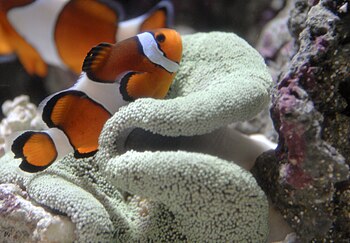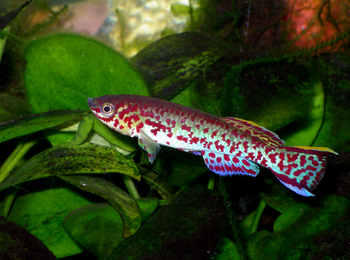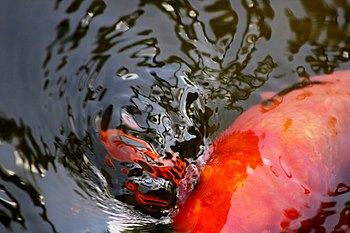Saying Goodbye to my Carpet Anemone!
I purchased the carpet anemone secondhand with my aquarium and it came with 3 clown fish that were hosting in it, it quickly became the prize of my saltwater aquarium. In the first month I found that the anemone would move around the aquarium until it found a comfortable position. This proved to be a nuisance as it would knock over various corals and in some cases sting some of my corals. I found myself repositioning corals on a weekly basis. I decided to not to add any new live stock until the anemone appeared to remain in the one location.
 |
| Clown fish taking safety in a Sea Anenome. (Photo credit: Wikipedia) |
Over the first 6 months I noticed the carpet anemone growing further in size and although this looked amazing, it was quickly becoming a problem. Carpet anemones have a powerful sting (as I experienced first hand) and they are also very sticky. I am certain I lost a blue tang because it accidentally swam into the anemone. Most other variety of anemones such as the regular bubble tip to do not have the same level of stickiness as a carpet anemone which means fish can accidentally get stung however can quickly escape, unlike with the carpet anemone.
I made an executive decision to remove the anemone from my saltwater aquarium. This was difficult as it was the home for 3 clown fish and having this relationship between fish and anemone is never guaranteed. Nonetheless I wanted a coral rich saltwater aquarium which I just couldn't have with the carpet anemone. I would suggest that if you are thinking of keeping a carpet anemone that you base your saltwater aquarium around the anemone, this will provide a less stressful experience. They are truly remarkable creatures. In terms of feeding your carpet anemone, they eat almost anything you feed your fish. I would use a turkey baster to feed my fish brine shrimp and I would just squirt some towards the mouth of the anemone. Otherwise I know of people who have cut up some cooked prawns and used that. Just remember if you have clown fish that host in the carpet anemone, they actually provide food and you will find the anemone to be relatively self sufficient.
If you had the same problem as me and needed to remove the carpet anemone from your saltwater aquarium there are various methods. If it is stuck to the glass on the side or bottom of your aquarium, you are in luck. Put a non toxic plastic glove on and grab a credit card. Use the credit card to slide behind the base of the anemone's stem to remove it from the surface. If it is attached to a rock, you can try removing using the same method, however I found it much easier to just sacrifice the rock and try and replace it with another piece of live rock. My local fish store gave me $200 credit for the anemone above however if I wasn't as desperate to remove it from my saltwater aquarium as quickly as possible, I could have sold it privately with the clown fish for probably $500. I kept the clown fish and after a couple of weeks their stress levels decreased and they made a new home within the several caves and tunnels in my saltwater aquarium.
Later on I will discuss what happened with my bubble tip anemone's!
Article Source: EzineArticles
|









